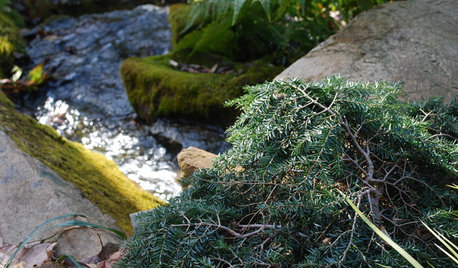Hemlock in Distress! Please help!
fizorzed
16 years ago
Featured Answer
Sort by:Oldest
Comments (14)
ken_adrian Adrian MI cold Z5
16 years agoRelated Professionals
Clark Landscape Architects & Landscape Designers · Ferndale Landscape Architects & Landscape Designers · Brentwood Landscape Contractors · McKinney Landscape Contractors · Medford Landscape Contractors · Brookline Landscape Contractors · Essex Landscape Contractors · Longview Landscape Contractors · Metairie Landscape Contractors · Mission Viejo Landscape Contractors · Peoria Landscape Contractors · Rockwall Landscape Contractors · Santa Ana Landscape Contractors · Tacoma Landscape Contractors · Woodbury Landscape Contractorsnuconiferlvr
16 years agoken_adrian Adrian MI cold Z5
16 years agowisconsitom
16 years agotsugajunkie z5 SE WI ♱
16 years agochester_grant
16 years agodcsteg
16 years agoken_adrian Adrian MI cold Z5
16 years agodcsteg
16 years agocascadians
16 years agowisconsitom
16 years agocascadians
16 years agonoki
16 years ago
Related Stories

PETS6 Ways to Help Your Dog and Landscape Play Nicely Together
Keep your prized plantings intact and your dog happy too, with this wisdom from an expert gardener and dog guardian
Full Story
DECORATING GUIDESDownsizing Help: Color and Scale Ideas for Comfy Compact Spaces
White walls and bitsy furniture aren’t your only options for tight spaces. Let’s revisit some decorating ‘rules’
Full Story
GARDENING GUIDES8 Unthirsty Plants Help You Save Water in Style
Spend less effort and money on your landscape with drought-tolerant and native plants that liven up your yard
Full Story
GARDENING GUIDESGreat Design Plant: Tsuga Canadensis ‘Bennett’
Bennett Canadian hemlock thrives in shade and provides sculptural interest in eastern U.S. gardens
Full Story
MATERIALSClever Combo: Aged Wood and Metal
Mixing distressed wood and metal makes for a potent design combination in a single furniture piece or an entire room
Full Story
CLOSETSThe 15 Most Popular Closet Luxuries on Houzz
Turn distressing disarray into streamlined perfection with closet organizers and amenities like these
Full Story
DECORATING STYLES5 Comfy Decorating Styles That Say 'Welcome!'
Send a message of warmth and ease with distressed, lovingly used and often-unmatched furniture and fabrics
Full Story
DIY PROJECTSTurn a Wooden Pallet Into Unique Photo Frames
Free wood? We're so in. Salvage a pallet or other cast-off wood to make delightfully distressed frames that fit almost any decor
Full Story
ROOM OF THE DAYRoom of the Day: Eclectic and Casual in a Michigan Great Room
Distressed finishes and a mix of styles make this newly built great room fit for a laid-back family
Full Story










Fledgeling_